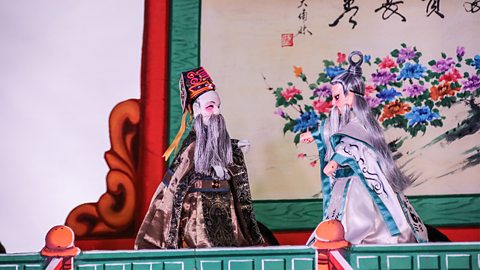Considering type, colour and functionality
When designing puppets, there are several aspects to consider, including:
- type
- colour
- functionality
Type
There are many different types of puppets and selecting the most appropriate would likely be the first consideration when designing one. Common types of puppets include:
- hand puppets - typically worn on one hand that can be used to operate a mouth, with the other hand used to operate an arm
- rod puppets - puppets operated using rods
- marionettes - puppets controlled from above using strings
- shadow puppets - flat, cut-out figures that are placed between one or more lights and a screen to create shadows

Image caption, Hand puppets
Image caption, Rod puppets
Image caption, Marionette puppets
Image caption, Shadow puppets
1 of 4
To select the most appropriate type, the designer should consider the purpose of the puppet and what it needs to convey on stage, eg whether the puppet needs to talk. It is also important to consider whether the puppeteerA person who operates a puppet. should be seen or whether they will be concealed.
Colour
Colour is an important consideration as it can be used symbolically to represent an idea. For example, a ghostly puppet representing the idea of death within a performance might be coloured completely black.
Functionality
Puppet designers need to consider how the puppeteer will operate the puppet. If it needs to be operated throughout an entire show, it will need to be constructed using lightweight materials so that it is comfortable to use. This is an important health and safety consideration to prevent injury and to ensure a consistently good performance during the run of a show.